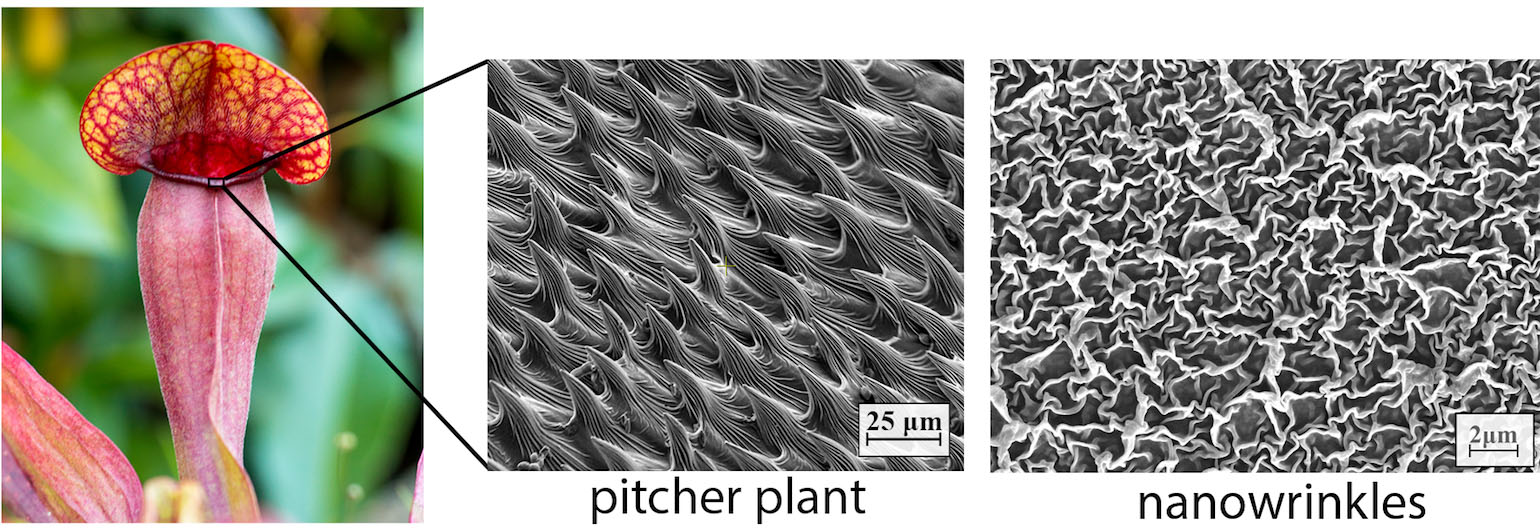What do a pitcher plant and a ship’s hull have in common? In future, it could be a lot more than you would think, thanks to a recent discovery by Australian researchers.
For many years, ships were protected from biofouling from bacteria, barnacles and other ocean nasties by antifouling paint containing tributyltin (TBT). This was highly effective, as it killed everything it came into contact with. In fact, it is so toxic to humans and sea life that it was banned in Australia in 2003.
Biofouling increases drag on ships’ hulls – costing Australian shipping and aquaculture industries billions of dollars a year in increased fuel consumption and maintenance. It can also affect aquaculture nets, as well as marine sensors and cameras.
For the past 15 years, an alternative to TBT has been sorely needed.
Chemistry researchers at University of Sydney’s Nano Institute may have solved this problem with an environmentally friendly nanostructured surface coating that fights biofouling without toxic ingredients.
Inspiration from nature
The coating works by being so slippery that the marine pests slide right off. This property is due to ‘nanowrinkles’ inspired by the insect-munching pitcher plant – which has similar miniature structures on its rim. The nanostructures used in the coating are 100,000 times smaller than the width of a human hair.
While the pitcher plant uses its nanowrinkles to trap water as a deadly slip ‘n’ slide for unfortunate insects, the anti-fouling coating saves marine life from a grisly fate.
As well as researching the applications of the technology in antifouling, the team has also looked into how it can reduce hydrodynamic drag, which has potential applications in shipping and microfluidics.
Research leader Associate Professor Chiara Neto said that her team was keen to understand how these surfaces work, and to push the boundaries of their application to increase ships’ energy efficiency.
“Slippery coatings are expected to be drag-reducing, which means that objects, such as ships, could move through water with much less energy required,” she explained.
The technology’s antifouling property works by stopping bacteria from sticking to the treated surface, which prevents the formation of biofilm which larger organisms need to grow.
Trials have shown that a very small amount of lubricant (1 ml per square centimetre) is all that is needed to create the slippery effect.
The coating is also transparent and able to be moulded into different shapes, which means it would work well with undersea sensors and cameras.

Success in the water
After success in the lab, where the coating repelled almost all the common species of marine bacteria, the team carried out field tests on shark nets at Watsons Bay baths in Sydney Harbour.
The results were impressive – for seven weeks, the coating resisted biofouling in the marine environment.
The team is working to set up another sea trial of its material on the hull of a boat, and is developing nanomaterials based on its research for future use in industry.
“We’ve received a lot of interest from companies all over the world about the technology. We’re exploring options at the moment,” Neto said.
Neto said that the team would like to work with companies who are interested in assisting with commercialisation of the research.
“Our best input would be transferring know-how to a company that has the means to turn [the technology] into a product,” she said.